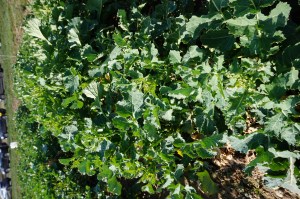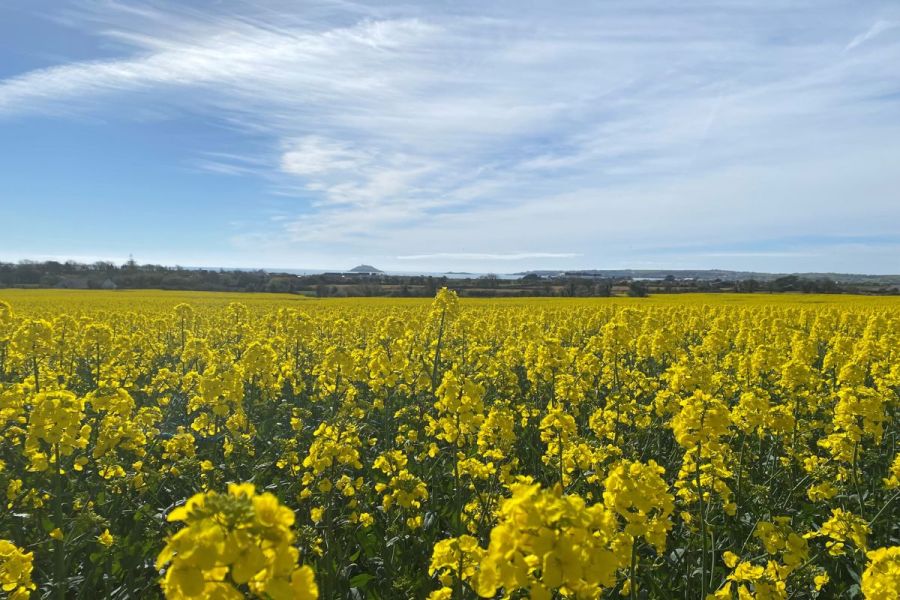Oilseed rape breeding has become integral to managing the risks associated with growing the crop and is helping farmers deal with the challenges they face. CPM explores how stacking multiple traits in single varieties has value on farm.
“It’s catastrophic for a crop to fall at the last hurdle as you’re losing any return on investment.”
By Melanie Jenkins
The past decade has seen progressive advances in understanding how to effectively grow oilseed rape amid a raft of challenges, not least of which have included increasing pest and disease pressures, the loss of chemical controls and variable weather patterns.
But a better understanding of how to grow the crop isn’t enough by itself. Growers have put in all the leg work but are still being thwarted by elements beyond their control, which is where breeding can step in. “Our strategy at the moment is to protect yield by breeding multiple genetic traits into varieties,” says Limagrain’s Coretta Kloeppel.

Yield is a vital element of oilseed rape production, but varietal traits can help secure this, according to Liam Wilkinson.
But yield is obviously still the most important aspect, says the firm’s Liam Wilkinson. “Yield is a vital element on both the AHDB Recommended List and to farmers, as this is what they get paid for. But what we’re trying to do in our breeding programme is to add traits to help secure this output.”
Duncan Durno of Openfield feels that variety choice for this coming season has to be around yield security. “We know there’s risk associated with establishing OSR because of cabbage stem flea beetle attacks, so we want to be able to remove as many other risks as possible through genetic traits. There’s little point in establishing the crop and then leaving it exposed to other risks when there’s the option to secure health and yield through traits.
“And the top yielding varieties are the most trait-stacked varieties, so there’s no compromising yield potential in exchange for loaded traits,” he adds.
Having varieties better able to cope with variability is all part of the trait-stacking strategy, explains Liam. “For example, N-Flex, which doesn’t necessarily allow for reduced nitrogen applications but enables plants to cope better if N uptake is delayed. So when growers can’t get to a crop in spring because of weather, ground conditions or other challenges, N-flex helps to flatten the N response curve of a crop. This means while the crop could still lose some yield, it’s not as much as it would have without this genetic lever.”
The 2021 and 2022 seasons were both years with very dry springs, says Duncan. “Growers may have got N on but because of the dry conditions, crops may not have been able to access it. OSR varieties that are more able to even out the peaks and troughs of N accessibility is part of a whole risk management package.”

One of the most significant stem diseases is phoma stem canker and resistance is well established in OSR varieties, says Coretta Kloeppel.
Another situation where Liam believes genetic traits are advantageous is against turnip yellows virus (TuYV). “The only way to mitigate the spread of TuYV by aphids is through varietal resistance as pyrethroids aren’t effective due to resistance in the aphid population. The TuYV trait offers true resistance as it stops the virus in its tracks, meaning it can’t be transmitted further.
Duncan agrees. “We’re seeing milder winters – look at the triggering of the derogation for use of neonicotinoids on sugar beet seed due to high mean January and February temperatures, this predicts the likely spread of the virus based on levels and migration of peach-potato aphids, the aphid that also spreads TuYV in OSR.
“As a tool in integrated pest management, TuYV resistance enables growers to use less autumn applied insecticide allowing CSFB predators to build up, without risking TuYV infection into those crops,” says Duncan.
“TuYV resistance also gives greater flexibility in the establishment window, which is vital when trying to combat CSFB. Growers can drill early if that’s when conditions are optimal, despite higher aphid and virus pressures.”
And there’s no point in applying inputs if growers can’t secure yield with them, says Liam. “Disease resistance in varieties helps to optimise returns and reduce selection pressure, protecting pesticides. Limagrain’s ‘Stem Health’ badge – awarded for a combination of stem disease resistance in varieties – is the culmination of this,” he believes.

Limagrain’s N-flex trait helps to flatten the nitrogen response curve of a crop, giving growers a wider window when they can’t get to a crop in spring because of weather.
“Having healthy stems later in the season means more oil content is secured because N can be remobilised from leaves into the pods. We really saw the benefits of this during last year’s drought, as it meant plants senesced with healthy stems and produced oil contents of 47% plus, giving growers a big bonus.”
One of the most significant stem diseases is phoma stem canker and resistance is well established in OSR varieties, according to Coretta. “But we’re always looking for new resistance genes, screening a wide range of materials. And we’re constantly screening heavily for light leaf spot (LLS) resistance in affected areas and in Scotland – a variety will only get a pass if it proves to be good enough in the north, where pressure is high.”
And unlike other disease resistances which rely on a specific gene, resistance to verticillium is quantitative, explains Coretta. “The material being produced has improved massively over the years and is tested vigorously in high pressure situations.”
But it’s not just diseases that threaten OSR crops, precious seed can also be lost prior to harvest if pods spring open prematurely, says Liam.
“I’ve spoken to farmers who’ve lost their OSR crop in minutes because of hailstorms and pod shatter resistance is really effective at preventing this. From Limagrain’s perspective we won’t commercialise a variety without it now.”
Beyond the ability to retain seeds, Duncan feels pod shatter resistance offers other benefits. “In the past, we’ve seen increased levels of slugs where there’s a higher level of OSR volunteers. These volunteers also create a green bridge for the spread of both airborne diseases and aphids, which spread TuYV into newly emerging OSR crops. So having pod shatter resistance isn’t just about securing the yield and investment in that one crop, but about future crops as well.”
Thriving in Ireland
OSR hasn’t always been the break crop of choice in Ireland, but it’s gained popularity as a replacement for sugar beet since 2006, says John Dunne farmer and variety manager for seed-supplier, Goldcrop.
“Growers quickly realised how good a break crop it is and subsequently the OSR acreage has increased and is expected to be 19,000ha this year,” he explains.
One reason for the increasing area has been better yields, says John. “We’ve seen a 30% increase over the past six years. Whereas growers would previously have achieved 4-4.5t/ha, they’re now regularly getting 5-5.5t/ha – so it’s a big increase.”
But getting the crop sown in time can be a challenge, he says. “Planting OSR behind winter barley is fine, but trying to get it in after winter wheat or spring barley can be tricky. In 2006, growers started out with conventional varieties but they’ve moved towards hybrids over time. We have to be careful that varieties aren’t too vigorous, but we’d rather be looking at the crop than looking for it.”
Having traits such as TuYV resistance in varieties is really important to Irish farmers because the climate is quite mild and the disease can take up to a third of OSR yield, according to John. “When we get a frost, it’s a notable topic of conversation here. And because it’s so mild, we’ve had issues with barley yellow dwarf virus, and this made me wonder if TuYV was also nipping at OSR yields.”
Working with Limagrain, Goldcrop took samples of varieties without TuYV resistance and found the virus to be consistently showing up. “Once you get your eye in for identifying the virus symptoms, you’ll see a reddening of leaves at the edges of the field and along tramlines. Last year we saw headline varieties without resistance falter in our official trials, whereas resistant varieties took this risk out of the equation.”
According to John, Irish growers have also had more trouble with LLS than with phoma and so really value highly resistant varieties. “LLS has always been the tougher beast, to my mind, and in some years the circumstances play into it with higher pressures, especially when there are nearby OSR stubbles. As the disease cycles so frequently and repeatedly, it can be hard to control and is the most damaging disease we have, so having genetic resistance is a huge help.”
He also feels that pod shatter resistance has to be standard in all varieties. “Our climate is tricky, so to have something that won’t shed is a big safety net. I can’t really believe that varieties still come to market without it.”
Irish farmers have become very fond of growing OSR, adds John. “It’s an essential part of the rotation for many, so having stacked traits to secure its future place here is important.”
This article was taken from the latest issue of CPM. Read the article in full here.
For more articles like this, subscribe here.
Sign up for Crop Production Magazine’s FREE e-newsletter here.




